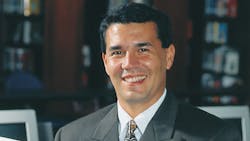At this writing, the stock market is hovering around all-time highs. Although Wall Street is exuberant, much of the country still struggles to recover from a severe recession that continues to plague most Americans.
In these tough economic times, education institutions find themselves in the all-too-familiar position of balancing staff demands, rapidly rising operations and facilities expenditures, costly new program requirements, and a funding base that makes securing needed monies extremely difficult. But one thing remains constant: students have to be educated, and schools and universities must provide the facilities and programs to meet this need.
Colleges and universities have built-in funding resources they can tap via tuition, endowments and more to address facilities and program needs. School districts are dependent on state and taxpayer generosity—which often isn’t generous at all. But realizing the importance of education, many states and localities are focused on raising needed funding to ensure students have safe, effective environments for learning.
A number of institutions have had success in passing significant capital-expenditure programs this year. Among some of the more robust are Cobb County, Ga., $718 million (part of the state’s Special Purpose Local Option Sales Tax program); Tacoma, Wash., $500 million; and Austin, Texas, $490 million (although the overall request was $810 million).
But not all are having success. This summer, the Farmington, Mich., district’s $222 million proposal was defeated—but administrators are repackaging it for a November election. Last November, Nevada’s Clark County district failed to win support of a bond issue that would have generated about $700 million. It was the first time in about 25 years that voters rejected a capital-expenditure request by the district.
Schools still have a full plate of capital-expenditure proposals coming up this year. Among them: Wake County, N.C., $810 million (election being held this month); Comal, Texas, $451 million; Fort Worth, Texas, $490 million and Jordan, Utah, $495 million (all in November).
The economy is slow to recover, but the nation’s education facilities needs continue to grow rapidly. School and university professionals diligently look for ways to operate and build more efficiently, but without adequate investment, it is difficult to ensure that this and future generations of children are provided safe, healthful and effective learning environments.
About the Author
Joe Agron Blog
Editor-in-Chief and Associate Publisher
Joe Agron is the editor-in-chief/associate publisher of American School & University magazine. Joe has overseen AS&U's editorial direction for more than 30 years, and has helped influence and shape national school infrastructure issues. He has been sought out for comments by publications such as The Wall Street Journal, The New York Times, USA Today, U.S. News & World Report, ABC News and CNN, and assisted with the introduction of the Education Infrastructure Act of 1994.
Joe also authors a number of industry-exclusive reports. His "Facilities Impact on Learning" series of special reports won national acclaim and helped bring the poor condition of the nation's schools to the attention of many in the U.S. Congress, U.S. Department of Education and the White House.
